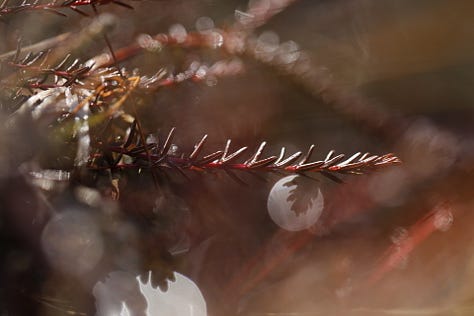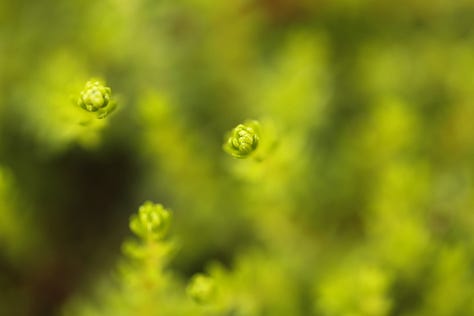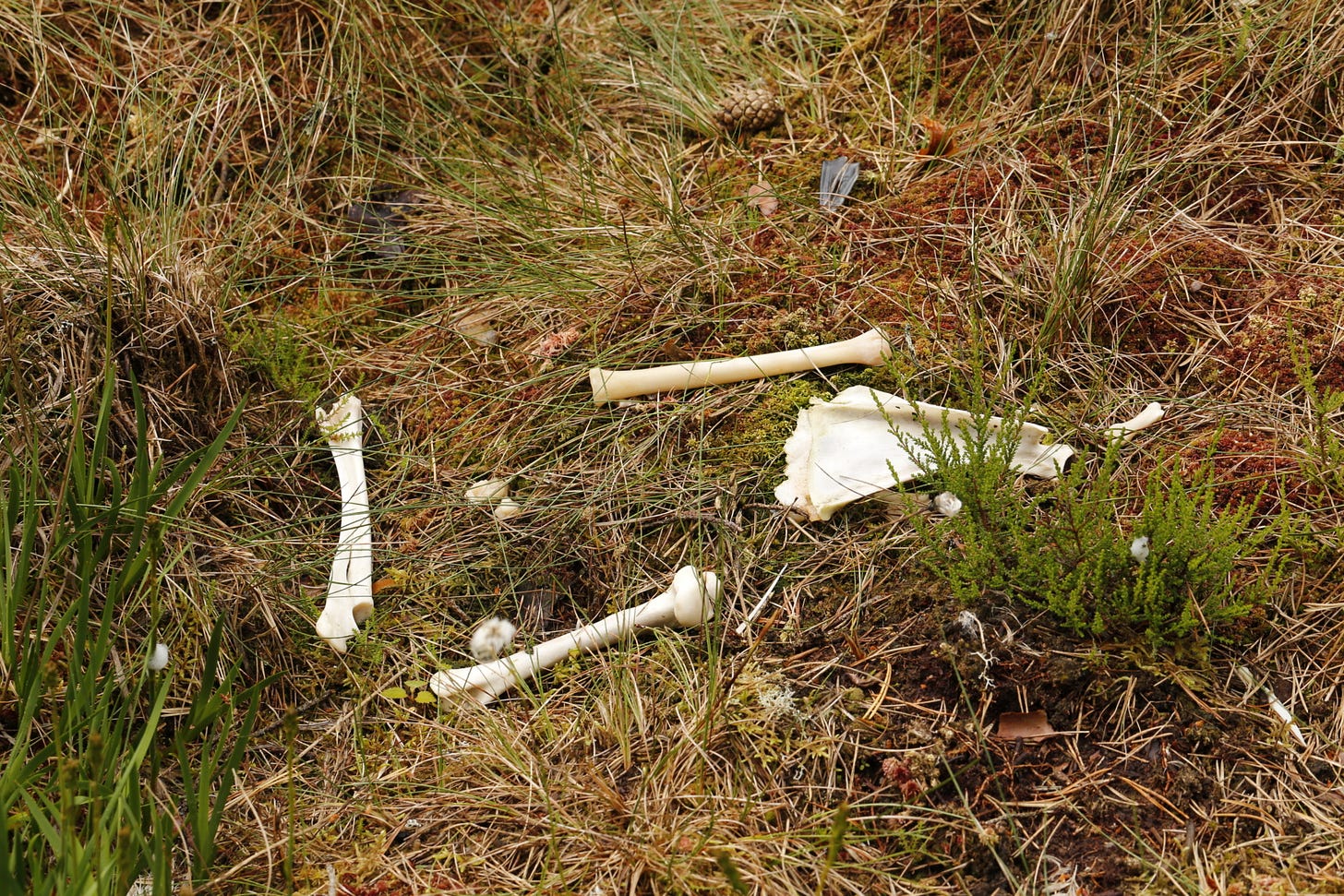Greetings from the moss, and welcome to this week’s letter,
I hope you enjoyed last week’s long read about what we reveal in our artwork; thank you for your replies, it’s good to know that this resonates. As well as more rain, the week has brought new subscribers, conversation and recommendations from fellow writers: thank you once again. I never take these for granted, and each brightens the day a little more.
As July settles in, the moss is already bearing flower and fruit, and - somewhat frighteningly - the first tints of autumn. At its edge, under Scots pine, fine orchids reach up. I look them up: Goodyera repens or Creeping lady’s tresses. Were they here last year, or have they responded to the rain? I now see them everywhere, just as if you change your car you notice so many more of the same model. I’m fairly certain that in the past two years they have not flowered so profusely.
I am getting better at picking out irregularities and change. To be fair, plants that took time to identify in early spring are now more clearly labelled with flower and fruit. Fungi pop up as punctuation; berries are ripening. Fruits from the waste, fertility in emptiness - the latter a legacy of our labels, not nature’s.
I shall be a little more concise this week and offer my observations in the form of some wordplay; I hesitate to call it a prose poem, but they are words of praise.
The rain's reward
First green begins to
replace brown,
the rust and ice of winter.
Louder now,
insistent.
Other colours are slower.
Cottons in off-white; flesh pink on blaeberry.
White stars, a constellation in the wood.
Midsummer has passed before others
join and widen the palette:
yellow asphodel, pink cross-leaved heath.
By July fruit jostles with flower.
We forget we are not the only ones;
neither moss nor earth is here to serve us.
Food for thought, and nature.
Purple and black gems:
blaeberries carry a dusky bloom;
those on crowberry shine brightly.
Sphagnum waits drily, biding its time,
breathing a little after rain.
Summer will soon pass; it sees the turning leaves.
In autumn it will regain ascendancy:
it knows the wet winter,
revels in a saturated spring.
Ever so slowly builds this place:
layers the ground,
grows the earth,
knits the seedbed,
for new lives which bring
flower and fruit on old bones.If, as I am, you’re curious about crowberry, there is some extra content at the end.
This week I recommend
’s poems: sometimes short, but always beautiful.Thank you for reading FLOW. I value each and every response to these weekly letters, and love to know what thoughts they prompt.
Until next week,
Supplement:
There are new lives - and new bones - on the moss too. I notice the birch seedling (bottom left) amid the bleached white leg of a roe deer fawn that sadly did not live to see the spring.
Crowberry (Empetrum nigrum) may be a small plant but it has been given many names. I have been watching it shift with the seasons from deep red back to green, and waiting for flower and fruit. I read that they are edible, but taste better after frost and are best used in preserves. I prefer to leave them for the animals and birds, including the crow (craw) from which they take their common name.
black crowberry ~ black-berried heath ~ blackberry heath ~ crakeberry ~ crauberry ~| crawberry ~ crowberry ~ crow pea ~ crowpert ~ curlew berry ~ hog cranberry ~ knowpert ~ monox ~ monox heather ~ mossberry ~ pigeon berry ~ wire ling






All words and images copyright © Michela Griffith except where otherwise noted













I love your letters, Michela.
The collection of photos this post l are, clear and show the beauty of the plants, which to me are unknown.Being the other side of the world. I am sure we do have similar . How do you manage to find their names?? Kye